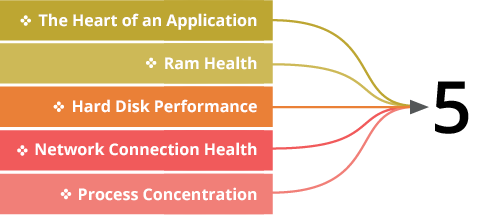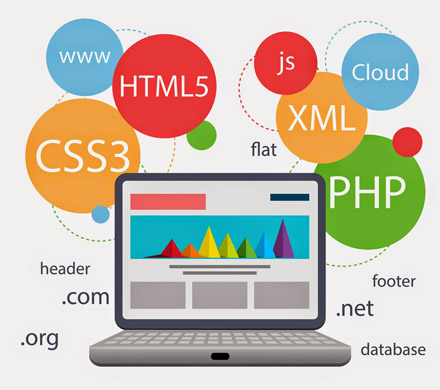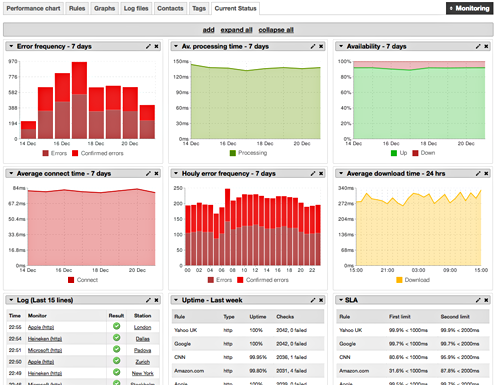
In terms of effective application monitoring, both synthetic and real-user monitoring offer unique insights into the performance and stability of your website. Both monitoring techniques also provide useful, and vastly different, insights that span from solving short term performance issues and long-term stability/performance issues. Because both forms of monitoring are essential when it comes to the development and sustainability of a stable application, many network administrator’s aren’t sure which is better for them. In an attempt to clarify this confusion, continue reading to explore the benefits of each monitoring technique. You may just find that the ideal monitoring solution for you is one that combines synthetic and real-user monitoring for a truly comprehensive monitoring solution.
Synthetic Monitoring Benefits
The following benefits are most commonly associated with synthetic application monitoring. It’s important to note this is a basic-level benefit list. Your organization may actually experience greater benefits through this unique and powerful monitoring technique.
- Controlled Monitoring Environment – Executing monitoring tests in a controlled environment provides a specific type of data geared toward understanding specific operations. By deploying tests with a set of controlled metric variables, such as tests using specific devices or browsers, you’ll receive specific information that assists in identifying latency and root causes of specific performance issues.
- Third Party Content Performance – Some of the most dynamic applications are not hosted on a local server. In fact, more and more applications are utilizing third party content within its visual or contextual infrastructure. Through the use of synthetic tests, you’re able to the receive what’s known as waterfall charts, which provide detailed information regarding loading times and response quality between the synthetic user and the application. This benefit is especially helpful for those using third party advertising content within their application.
- Threshold Development – While using synthetic monitoring to establish a final threshold level, or baseline, is not recommended (as the actual performance thresholds may differ with real users) it is an excellent way to establish beginning baselines.
Real-User Monitoring Benefits
- Understanding of Application Usage – Synthetic applications provide detailed insights regarding the performance of an application within a controlled environment; however, real-user monitoring offers real insights into how your application is actually used. This information helps identify priorities for future developments and upgrades.
- Geographic Distribution of Users – The performance of an application partly depends on where the users are geographically located. By monitoring actual users, you’re given a clear insight into where users are actually located. This information helps determine whether or not the end-user experience is hindered based upon their physical location.
- Information Distribution – By monitoring the activities and behaviors of actual users, the actual flow of users (their behavior) is clarified. No matter how well-equipped your synthetic monitoring solution may be, its controlled environment cannot predict how users will actually interact with your application. Real-user monitoring provides accurate data reports regarding the daily channel distribution and network usage of actual users.



